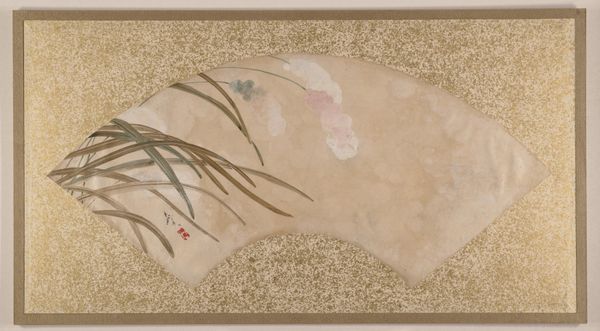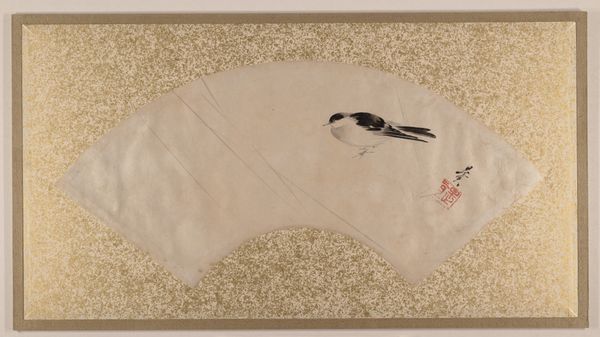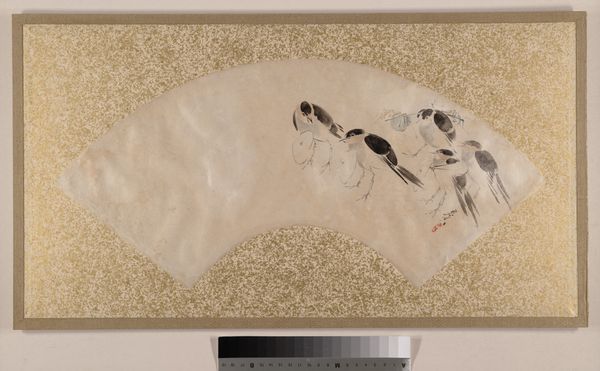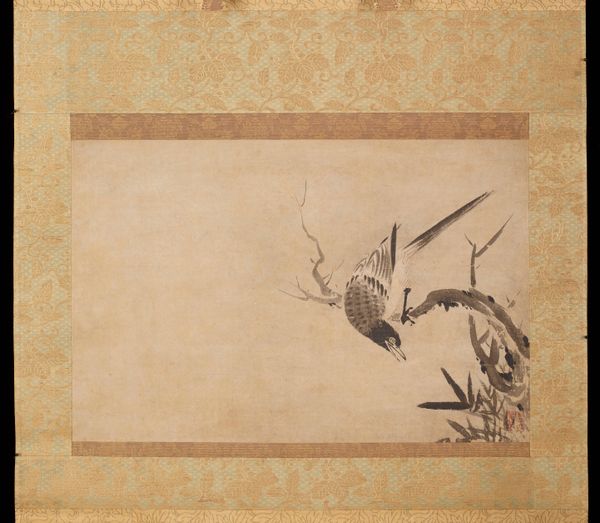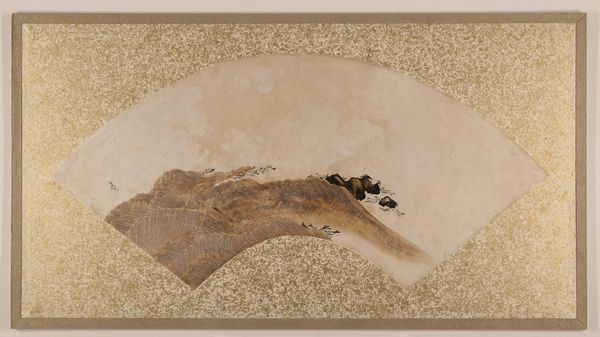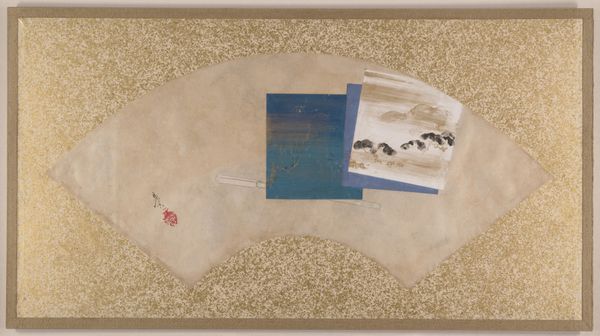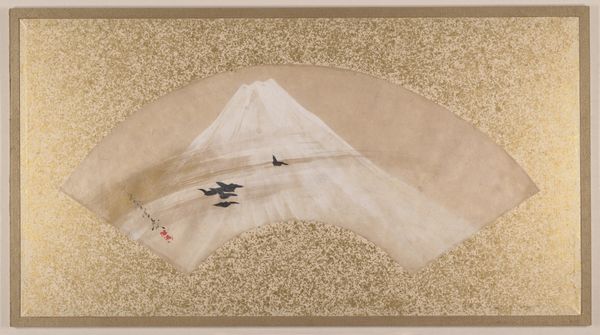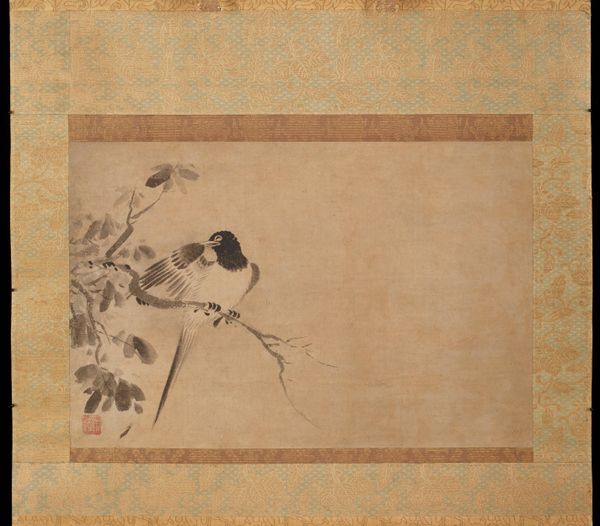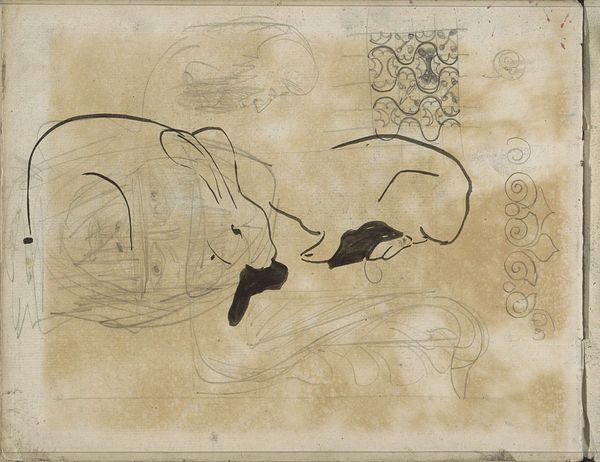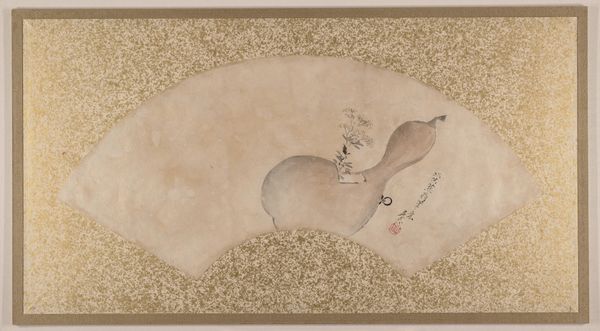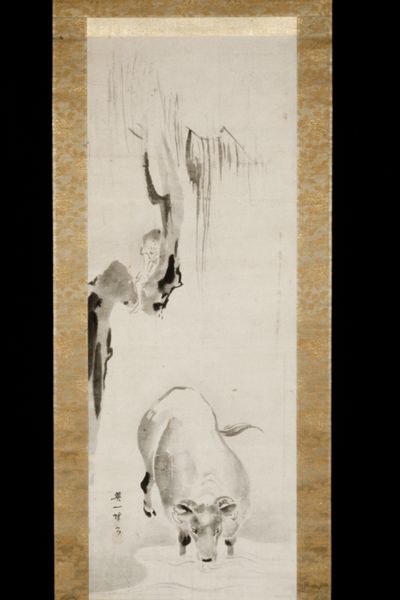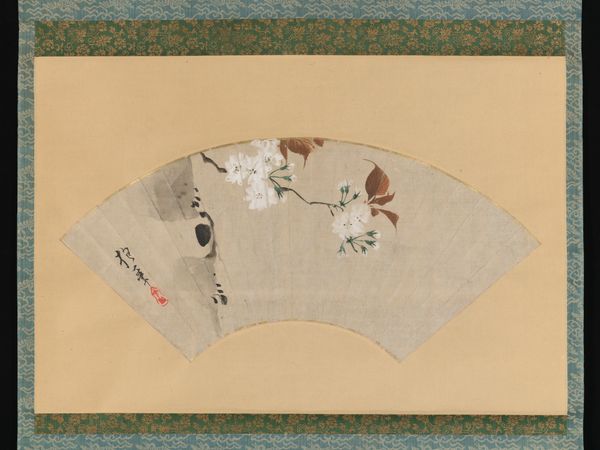
Dimensions: Overall: 13 x 23 5/8 in. (33 x 60 cm) Image: 7 x 20 1/4 in. (17.8 x 51.4 cm)
Copyright: Public Domain
Shibata Zeshin painted an egret on a tree stump with ink and color on silk. The image is presented in the shape of a fan on a gold-flecked background. Made in Japan during the Meiji period, this work reflects a time of great change. After centuries of feudalism and relative isolation, Japan opened its doors to the West, resulting in a complex negotiation between tradition and modernization. Zeshin, trained in traditional Japanese painting and lacquer techniques, navigated this changing world by creating works that appealed to both Japanese and Western tastes. Notice how the egret, a symbol of purity and elegance in Japanese art, is rendered with a subtle realism. The tree stump, painted with bold, expressive brushstrokes, contrasts with the delicate rendering of the bird, a tension that reflects the broader cultural negotiation taking place in Meiji Japan. To understand this artwork better, we can turn to historical documents and cultural studies research. These resources shed light on the fascinating story of Japan's modernization and the role of art in shaping national identity.
Comments
No comments
Be the first to comment and join the conversation on the ultimate creative platform.
